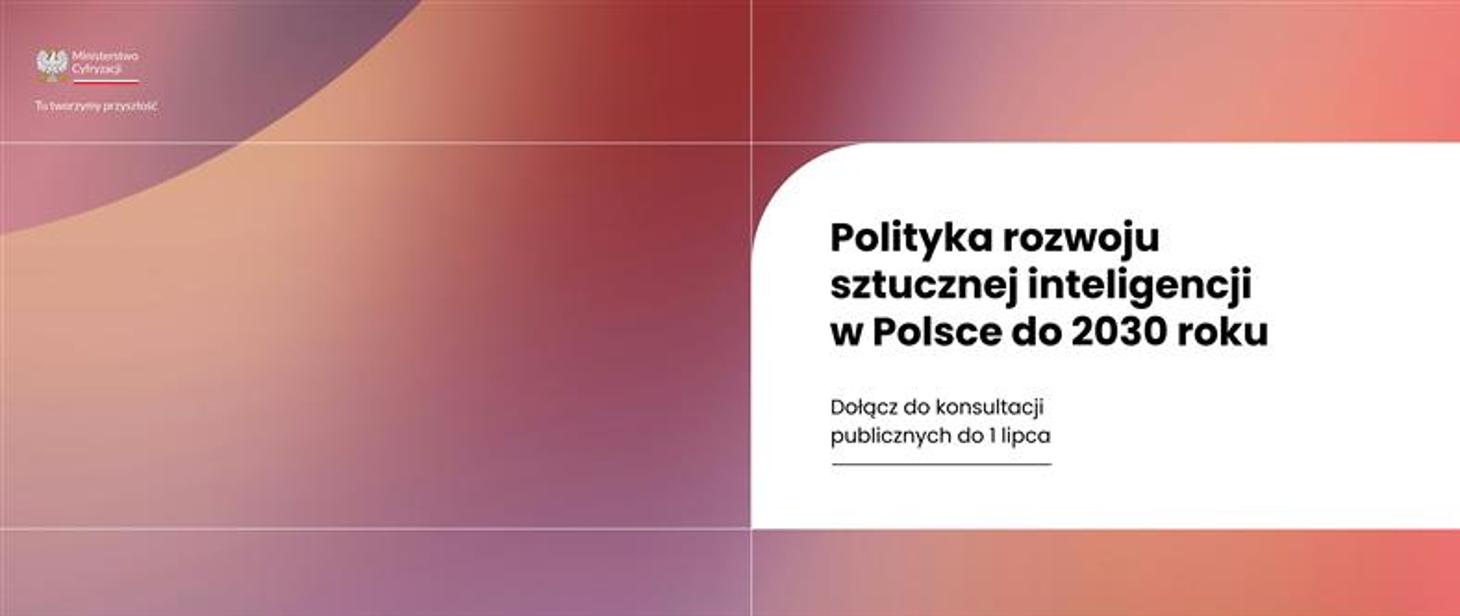Artificial intelligence is no longer a futuristic vision – it’s already transforming how we work, learn, and use public services. Recognizing the immense potential of this technology, Poland has adopted an ambitious AI strategy through 2030, aiming to become one of Europe’s leaders in the field. But is the country truly ready for this technological revolution – and what does it mean for everyday citizens?
Poland’s Vision as a European AI Center
Ambitious Goals on the Horizon
The government has set a bold objective: by 2030, Poland aims to rank among the top 10–20 countries in global AI indexes like the Tortoise AI Index and the Government AI Readiness Index. This means bridging the gap with tech powerhouses like France, Germany, or the UK in just a few years. To achieve this, the government has drafted and begun implementing a national AI development policy.
As Deputy Minister of Digital Affairs, Dariusz Standerski, states:
“We want to create a coherent national AI ecosystem, increase national computing capacity, and strengthen mechanisms and synergies in AI development at the European level.”
These are not just empty declarations – the government is already preparing concrete investments and implementation mechanisms.
The Four Pillars of Poland’s AI Strategy
- Strong AI Ecosystem – integrating science, administration, business, and civil society. The goal is to create legal, technological, financial, and educational conditions that enable AI development based on cooperation and trust.
- Efficient Government – deploying AI in public administration securely and in line with actual institutional needs. AI is expected to automate routine tasks and improve communication with citizens.
- Robust Science & Competitive Economy – advancing competencies, supporting research and implementation, and investing in talent. The strategy includes specialist education and widespread AI use in strategic sectors.
- AI for Everyone – developing ethical standards, privacy protections, and consumer rights. AI must be trustworthy and support inclusive solutions that benefit all social groups.
Poland in the European Context – Where Do We Stand?
Concerning Statistics
According to Eurostat data from 2024, only 5.9% of Polish companies with over 10 employees used any form of AI – placing Poland second to last in the EU, just ahead of Romania.
In sectors like logistics – where AI could bring major benefits – less than 1% of companies have implemented it. Meanwhile, 55% of SMEs (which generate nearly 45% of Poland’s GDP) consider AI investments irrelevant for productivity.
Positive Signals
EY research offers a more optimistic picture: 25% of Polish companies have completed at least one AI implementation, and 40% are currently in the process. Importantly, 78% of companies that adopted AI reported expected benefits.
Polish firms are ahead of their Central and Eastern European counterparts: only 18% of Polish companies avoid AI investment entirely, compared to 43% in neighboring countries.
Major Investments and Projects
AI Gigafactory – A Future-Oriented Investment
A flagship initiative is the planned AI Gigafactory, with an estimated budget of PLN 5 billion. It will not be a single central building but a network of connected hubs in Warsaw, Poznań, Kraków, Gdańsk, and Wrocław. The plan includes purchasing 30,000 GPUs for these five AI centers.
Deputy Minister Standerski explains:
“Poland will join the ranks of AI leaders in the EU. We are not afraid of bold investments – we see AI as a strategic development direction.”
National Data Processing Center (KCPD)
Simultaneously, the National Data Processing Center (KCPD) is under construction, valued at PLN 1.7 billion, half of which comes from the National Recovery Plan. It includes three modern data centers in Ożarów Mazowiecki, Leszno, and Tarczyn. This project will ensure secure storage for public administration data, reducing reliance on global tech giants.
Bielik – Poland’s ChatGPT
One of Poland’s top AI successes is the Bielik language model, developed by the SpeakLeash Foundation with AGH University. Bielik is an open-source model with 11 billion parameters, trained exclusively on Polish-language datasets of known origin, ensuring full control and transparency.
Bielik is not just a prestigious research project – it has strong business potential. It’s free to use and supports text processing, summarization, and customer communication.
Education and Skills – The Foundation of AI Development
Massive Skills Gap
A major obstacle to AI adoption is the lack of skilled professionals. In Poland, 51% of adults lack even basic digital skills – a serious barrier to the strategy’s success.
Educational Programs
The government is addressing this through comprehensive educational initiatives. The “E-competence” project, funded by the National Recovery Plan, will provide digital training for over 254,000 people, including teachers, officials, and digitally excluded citizens.
Microsoft, as a key partner, is investing PLN 2.8 billion in Poland’s AI infrastructure and educational programs. The company aims to train one million Poles in practical AI use – already, 500,000 have participated in the first six months.
Challenges and Barriers
Regulations and Security
AI deployment brings regulatory challenges. The European AI Act, effective since August 2024, imposes numerous obligations on companies to ensure safe AI usage. Polish firms must comply, which requires further investment and expertise.
To address these risks, experts at NASK developed PL-Guard – a Polish system to evaluate how language models detect harmful content. This counters growing threats like AI-generated hate speech and misinformation.
Funding and Investment Gaps
Despite growing awareness of AI’s benefits, Polish companies allocate only 0.6% of annual revenue to AI – below the global average of 0.8%. This may seem minor, but given Poland’s lower revenue levels, the investment gap is significant.
Success Stories of Polish AI Startups
Globally Competitive Solutions
Poland’s AI sector has scored notable international achievements. ElevenLabs, a synthetic speech startup, raised over PLN 700 million in 2025. Their generative speech and text synthesis tools are used by global tech giants.
AI Clearing, named 2025 Startup of the Year, offers AI-based systems to monitor large-scale construction projects – delivering detailed reports in 6 hours, far ahead of competitors.
Startup Ecosystem Growth
In Q1 2025, venture capital funds invested PLN 444 million in 35 Polish tech companies – an 11% increase from the previous year. The most promising projects focus on AI, automation, and modern IT infrastructure management.
International Collaboration
AI Continent Plan
Poland actively participates in the European “AI Continent Action Plan,” launched by the European Commission in April 2025. It focuses on infrastructure, data access, sectoral deployment, skills development, and streamlined regulation.
Under this plan, Poland is building two AI Factories: one in Kraków (AGH Cyfronet) and one in Poznań (Piast-AI). These centers will combine computing power with sustainable data centers and high-quality datasets.
Piast-AI Factory
The Piast-AI Factory in Poznań focuses on health sciences, space, and robotics. It is led by the Poznań Supercomputing and Networking Center and works with Poznań University of Technology, Adam Mickiewicz University, and Nicolaus Copernicus University. It is supported by the ministries of digital affairs, science, and finance.
Impact on the Polish Economy
GDP Growth Potential
Forecasts are optimistic: AI development could raise Poland’s annual GDP growth by up to 2.65 percentage points. By 2030, automation could replace 49% of work time while creating better-paid jobs in key industries.
EY estimates that fast AI adoption could add another 0.7–2.1% to GDP growth by 2033 – a significant boost for closing Poland’s development gap with Western Europe.
Sectoral Transformation
AI will greatly impact core sectors: healthcare (diagnostics and personalized treatment), agriculture (crop optimization), and finance (risk analysis and fraud detection).
Social and Ethical Considerations
Workforce Concerns
22% of Poles fear AI’s growing role at work, and 36% worry about job losses. These concerns are understandable, but history shows new technologies tend to create more jobs – though often requiring new skills.
Need for an Inclusive Approach
It’s vital to ensure AI benefits are shared across all social groups. The AI strategy emphasizes ethical standards and consumer protection, aiming to support inclusive solutions that benefit everyone without discrimination.
What Does This Mean for the Average Pole?
Improved Public Services
AI in public administration means faster procedures, better communication, and more accurate decisions. Citizens will spend less time waiting in lines and more time solving issues online with AI support.
New Job Opportunities
The AI industry’s growth will create well-paid jobs beyond just programmers – including AI ethicists, system trainers, data analysts, and implementation consultants.
Access to Tailored Tools
Thanks to language models like Bielik, Poles will have AI tools tailored to their language and cultural context, ensuring precision and control over data processing.
Roadmap to Implementation
Timeline
The National Data Center is scheduled to be completed by 2026–2027 and begin operations in 2028. The AI Gigafactory will be launched in phases over the same period.
Funding
The government will allocate billions of złoty from national and EU sources, including the National Recovery Plan and public-private partnerships with global tech firms.
Progress Monitoring
The strategy’s success will be measured by international AI rankings, number of implementations in public administration, sector investment growth, and AI specialist education figures.
Summary
The Ambitious AI Policy 2030 is more than a set of declarations – it’s a concrete plan to transform Poland into a European AI powerhouse. Although Poland starts behind some EU leaders, the strategy, significant investments, and private sector engagement provide real potential to catch up.
Success depends on the joint efforts of science, business, government, and civil society. Only by working together can Poland fully realize its AI potential – not just as a user, but as a creator and exporter of world-class AI solutions.
The coming years will show whether these plans become reality. One thing is certain: AI will shape Poland’s future, and how we prepare for this shift will define our global position in the 21st-century economy.




